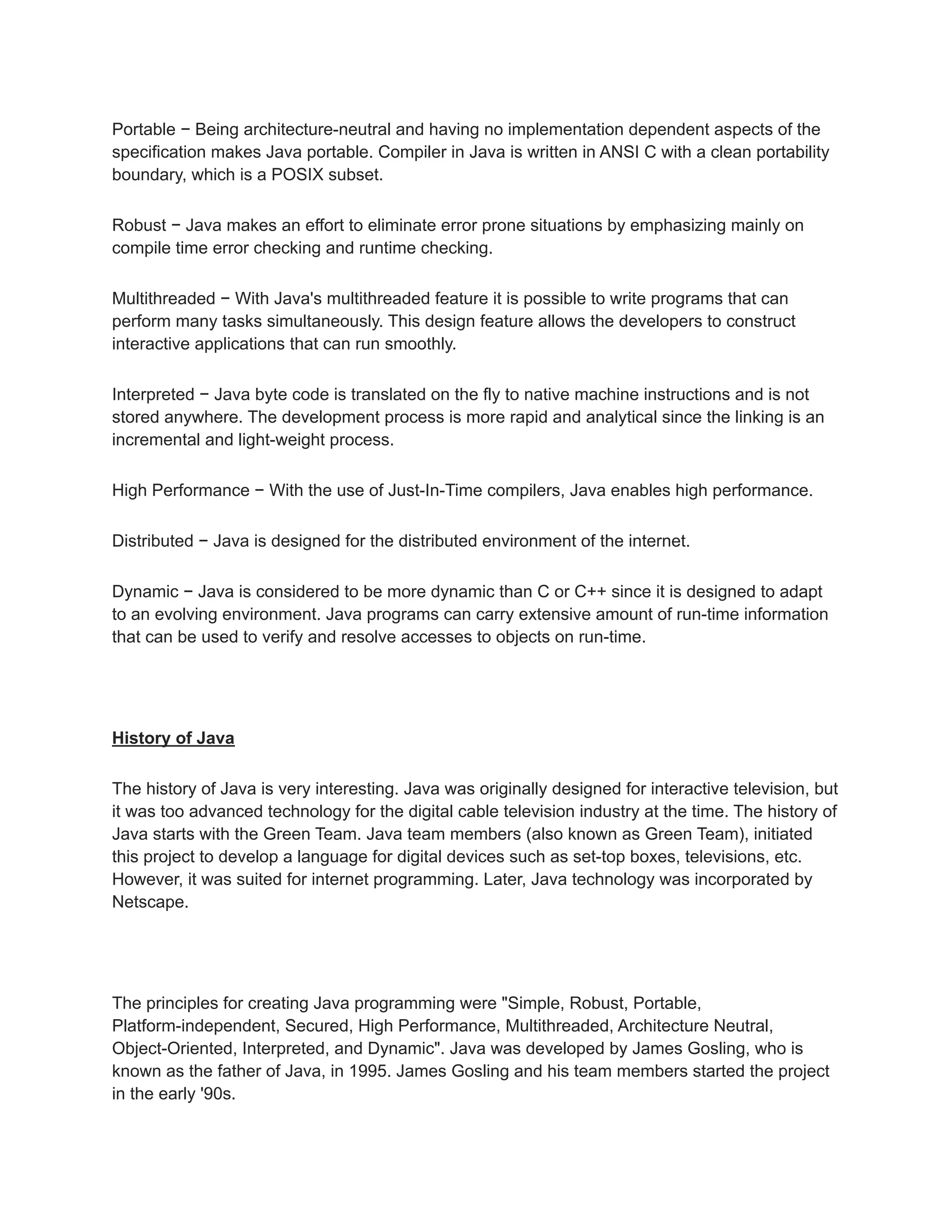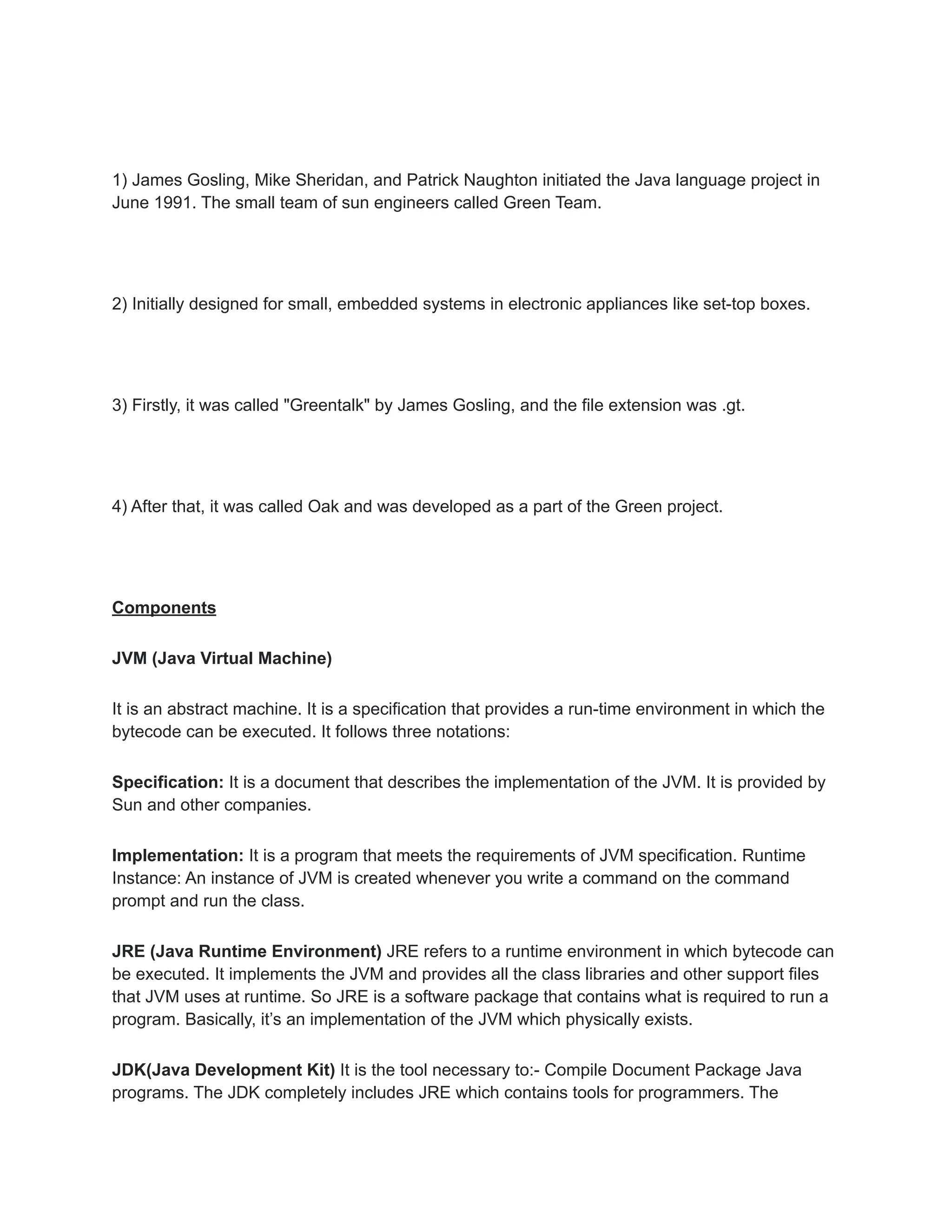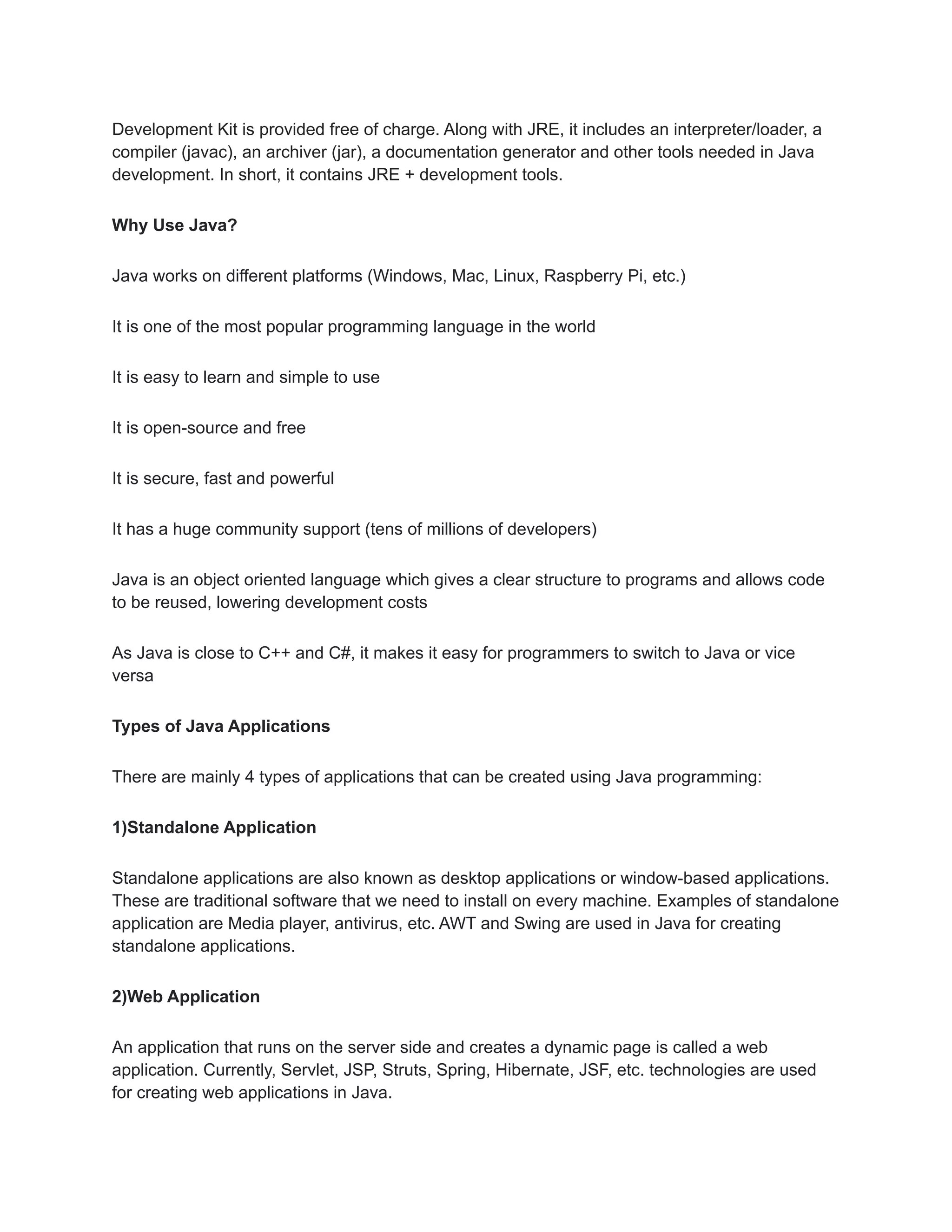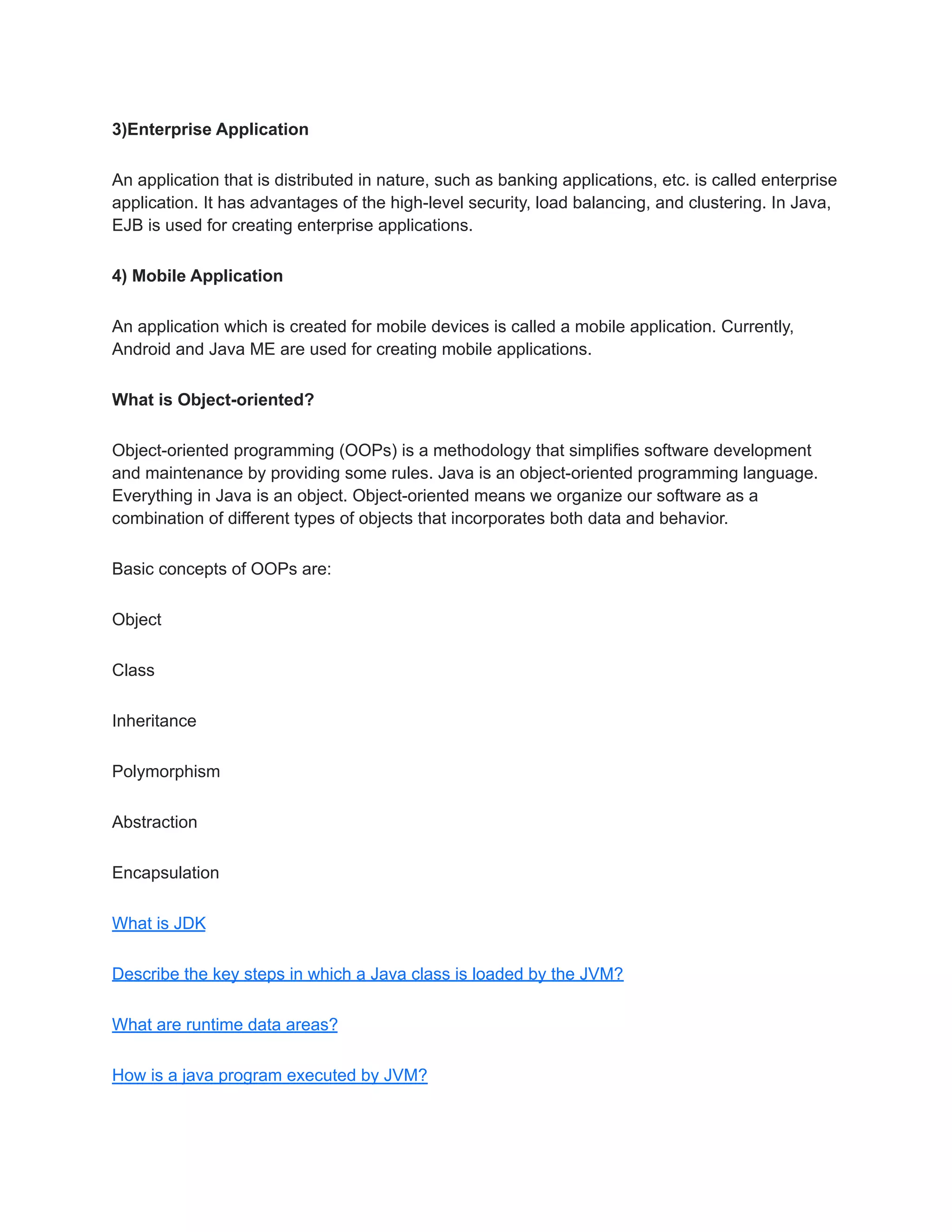Java is a high-level, object-oriented programming language and platform, initially developed by Sun Microsystems and released in 1995. It supports various application types including standalone, web, enterprise, and mobile applications while ensuring features like platform independence, security, and robustness. Java utilizes components like JVM, JRE, and JDK for its execution and is known for its ease of learning and widespread community support.
![Java Basic What is Java Java is a programming language and a platform. Java is a high level, robust, object-oriented and secure programming language. It was originally developed by Sun Microsystems which was initiated by James Gosling and released in 1995 as core component of Sun Microsystems' Java platform (Java 1.0 [J2SE]). The latest release of the Java Standard Edition is Java SE 10. With the advancement of Java and its widespread popularity, multiple configurations were built to suit various types of platforms. For example: J2EE for Enterprise Applications, J2ME for Mobile Applications. The new J2 versions were renamed as Java SE, Java EE, and Java ME respectively. Java is guaranteed to be Write Once, Run Anywhere. Features of Java Object Oriented − In Java, everything is an Object. Java can be easily extended since it is based on the Object model. Platform Independent − Unlike many other programming languages including C and C++, when Java is compiled, it is not compiled into platform specific machine, rather into platform independent byte code. This byte code is distributed over the web and interpreted by the Virtual Machine (JVM) on whichever platform it is being run on. Simple − Java is designed to be easy to learn. If you understand the basic concept of OOP Java, it would be easy to master. Secure − With Java's secure feature it enables to develop virus-free, tamper-free systems. Authentication techniques are based on public-key encryption. Architecture-neutral − Java compiler generates an architecture-neutral object file format, which makes the compiled code executable on many processors, with the presence of Java runtime system.](https://image.slidesharecdn.com/javabasic-230120152551-c6589b0b/75/Java-Basic-pdf-1-2048.jpg)




